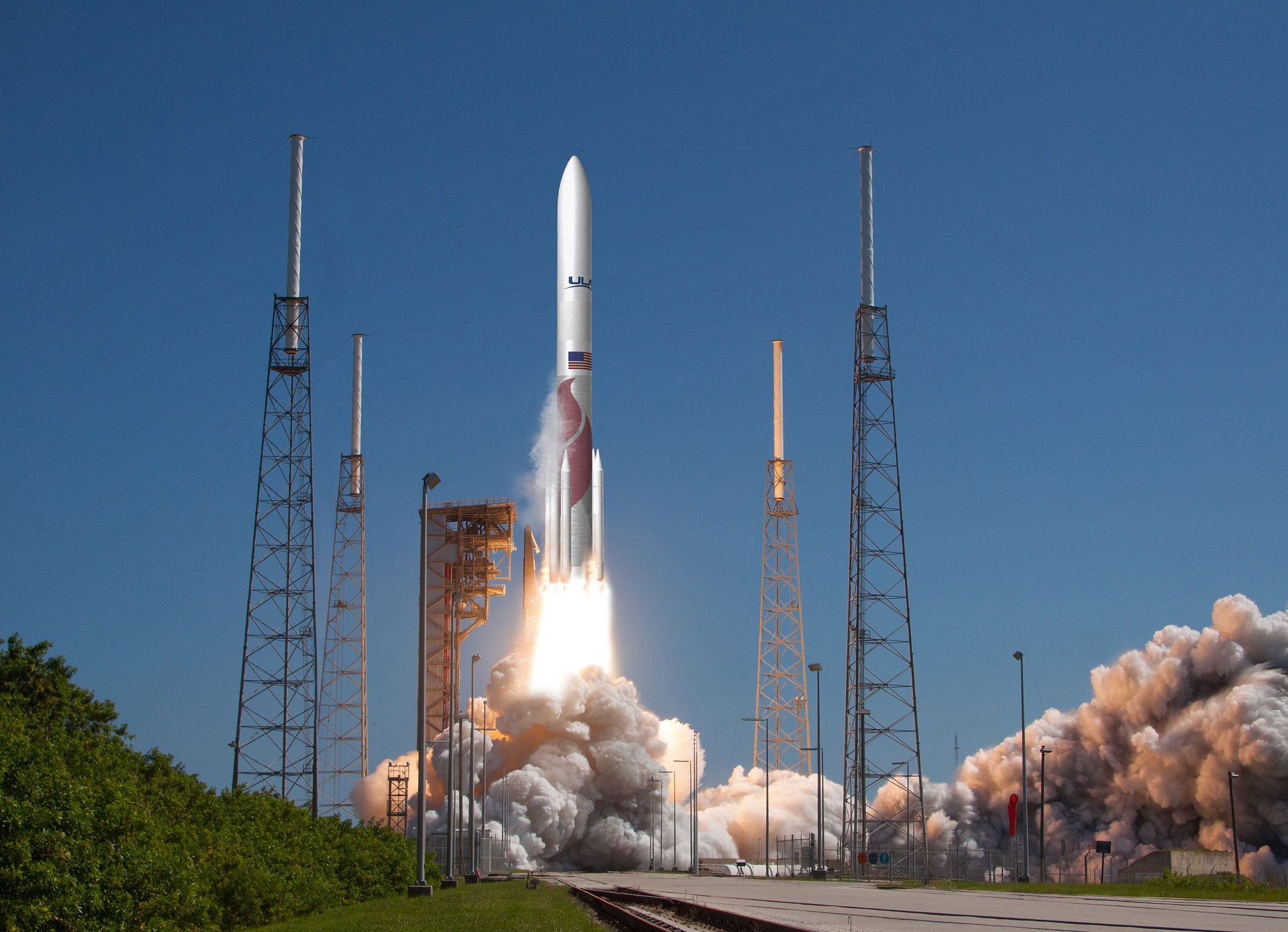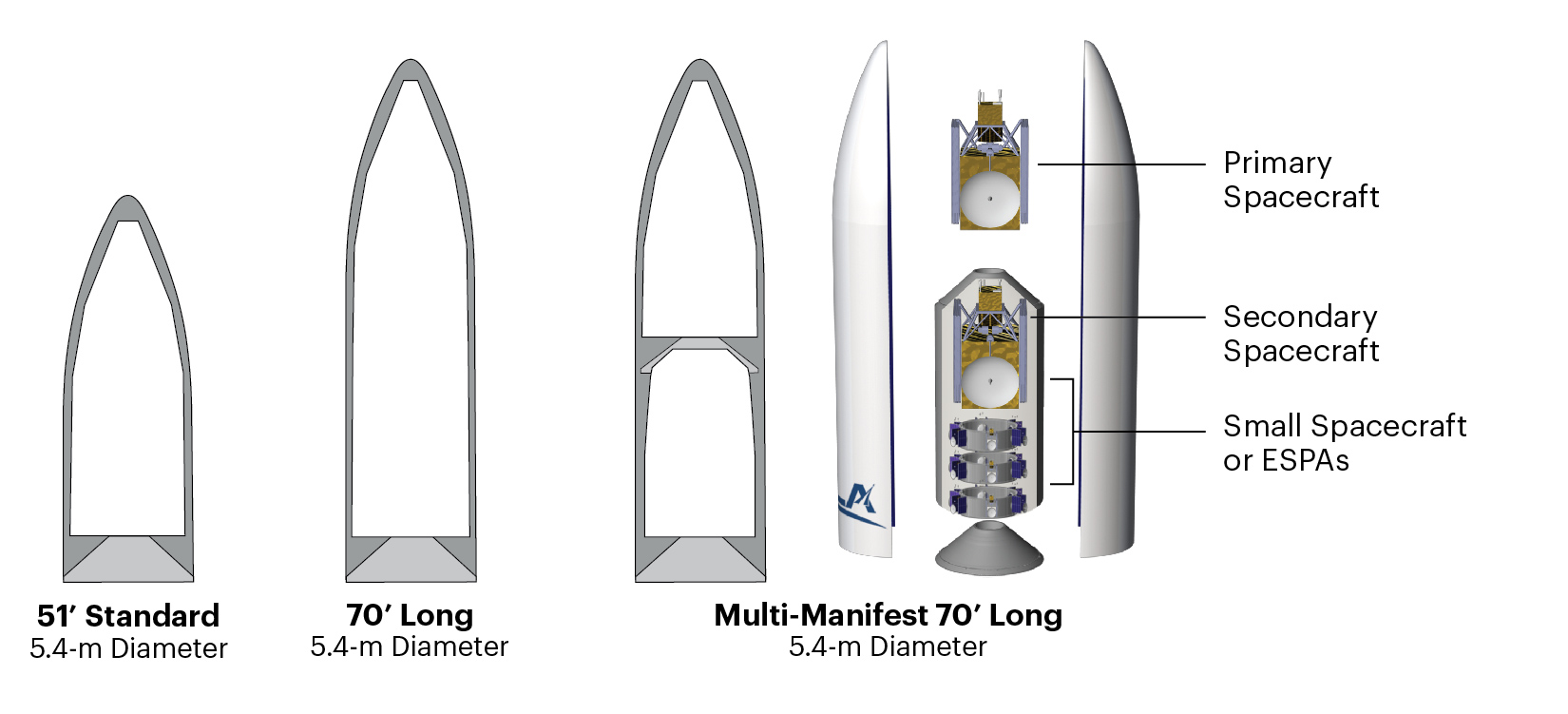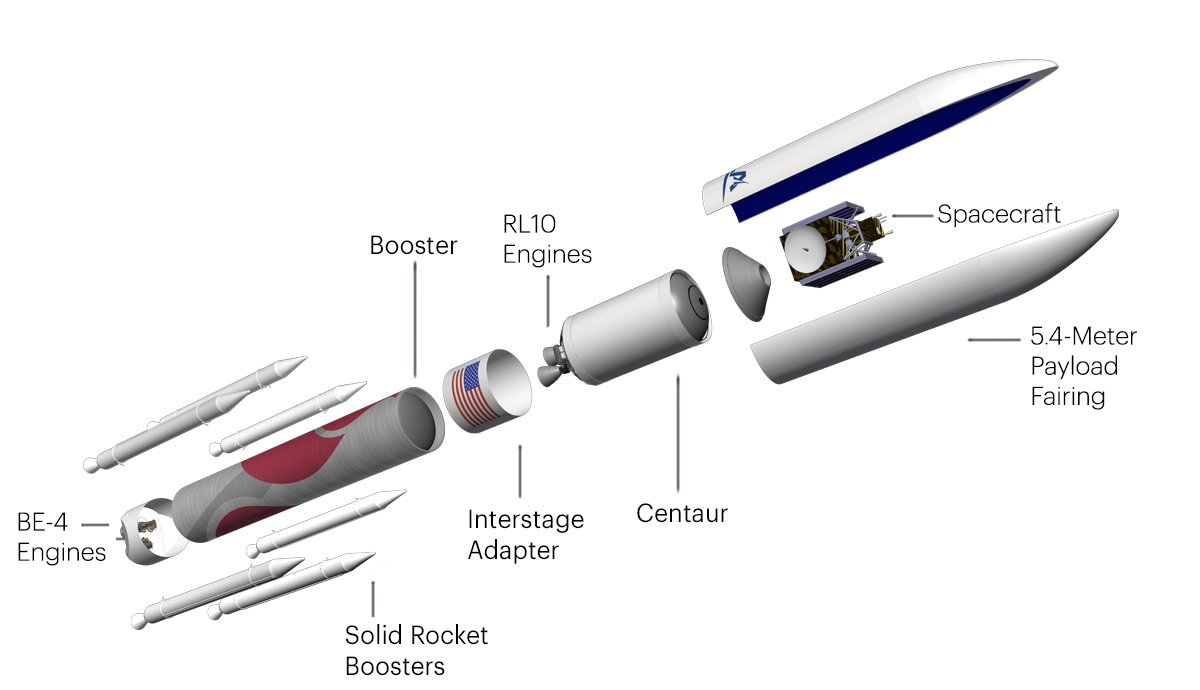
ULA’s Next Generation Vulcan Launch Vehicle
Many companies and agencies are hard at work on next-generation launch vehicles and technology. This comes with the goal to improve their capabilities, lower cost, increase access to space, and much more. United Launch Alliance is no exception with the development and manufacturing of the Vulcan rocket. This launch vehicle is meant to be the next best thing and have a bright future in the industry.
United Launch Alliance has made a long list of improvements for the upcoming Vulcan launch vehicle. Some of the main features of Vulcan that help make it stand out are its multiple configurations, updated performance, fairings, and propulsion. All of which combine into a single launch vehicle with more capabilities than any vehicle United Launch Alliance has created prior.
There is a lot of time and money when developing a new launch vehicle. However, if successful, it can help increase a company or agency’s future launch options tenfold. While United Launch Alliance is making a lot of different upgrades on Vulcan, it’s important to point out they are holding back compared to other companies around the country. This could have either a positive or negative impact on the company over time.
ULA’s Vulcan Background

The Vulcan Centaur is a two-stage rocket that United Launch Alliance has been developing since 2014. ULA has a lot of experience with past rockets such as the Delta IV and Atlas V just to name a few. Not only do they have a lot of experience but a very impressive track record as well. This previous experience along with information learned from past launch vehicles has been applied when developing the Vulcan Centaur. ULA’s goal with the launch vehicle is one rocket that can do it all. This refers to many different types of missions, launch configurations, etc. United Launch Alliance specifically mentions that the Vulcan is “America’s rocket. One system for all missions.”
The Vulcan is transformed to meet ULA’s customer needs. One of the ways the company is doing this is by lowering the cost significantly to provide the best value choice. The rocket is also meant to provide higher performance and affordability while still continuing to keep extremely high quality and reliability. As I mentioned prior United Launch Alliance’s long history of successful launches is one of the most appealing factors to different customers launching with the company. ULA is planning to keep a good record with future Vulcan launches as well. ULA also mentions that Vulcan uses flight-proven and innovative technology that will transform the future of space launches.
Vulcan Features

Configurations – The first important aspect of the Vulcan rocket is the multiple configurations. Different configurations of a launch vehicle provide a lot of opportunities to a company and specifically their customers. With changes in power and fairings size, you can increase or decrease the capabilities of a rocket with ease. This saves a lot of time and money compared to developing and manufacturing additional launch vehicles. This is exactly what ULA is doing with the Vulcan. The Vulcan Centaur is available in four standard offering configurations including zero, two, four, and six solid rocket booster (SRB) variants.
Not only are the solid rocket boosters configurable, but many different parts of the launch vehicle as well. Starting at the bottom of the launch vehicle is the core stage or main booster. This is powered by two BE-4 engines currently under development and testing by Blue Origin. Then on the sides of the booster are 0 to 6 SRBs depending on the configuration. Above the booster is the interstage adapter followed by the Centaur second stage powered by two RL10 engines. Finally, you have the fairings and spacecraft inside. Similar to the solid rocket boosters the fairings have many different options in size.
Performance – The next unique feature of the Vulcan launch vehicle is performance. I just mentioned the long list of options for additional solid rocket boosters on the core stage. Each gives more or less power depending on what the mission requires. Starting with no additional SRBs, the Vulcan cannot reach GEO and can carry 10,600kg to low Earth orbit. The next option is two solid rocket boosters. This increases the power and allows the Vulcan to bring 2,600kg to GEO and increases the LEO payload to 18,500kg. Then there are 4 SRBs with a 4,800kg payload capacity to GEO and a 23,900kg capacity to LEO. The last variant with additional SRBs is 6 with 6,500kg to geosynchronous orbit and 27,200kg to low Earth orbit. ULA even offers a more powerful variant called heavy with increased payload capacity to each orbit.
Fairings – Another vital feature of the Vulcan design has to do with the fairings. Payload fairings provide a safe and controlled environment for the spacecraft during the ascent. ULA’s payload fairings are configured for off-pad payload encapsulation to enhance payload safety and security and minimize on-pad time. The specific Vulcan Centaur variant is encapsulated with a 5.4m diameter payload fairing. The fairings are a sandwich composite structure made of vented aluminum-honeycomb core and graphite-epoxy face sheets. When the fairings need to separate, they use a debris-free horizontal and vertical separation system with spring packs and frangible joint assembly.
There are multiple configurations as well with an additional 15.5-meter length and 21.3-meter length. ULA also provides a service called multi-manifest where multiple different spacecraft are integrated within the fairings on a single launch. This helps lower the cost and increase the amount of spacecraft in a single launch. The variety of fairing sizes can facilitate launches with few or many different spacecraft.
Propulsion – The last aspect of the Vulcan that I want to point out is propulsion. As I mentioned prior, the first stage is powered by two BE-4 engines developed by Blue Origin. These are very large and powerful engines that produce around 550,000 lbs of thrust at sea level. These engines are LNG or liquid natural gas engines. The solid rocket boosters are from Northrop Grumman. They are constructed out of a graphite-epoxy composite with the throttle profile designed into the propellant grain. Each additional SRB is 71.8ft long and burns for 90 seconds. The peak vacuum thrust of each booster is 459,600 lbs of thrust. The last component of propulsion is the upper stage.
Vulcan will use two RL10 engines to power the second stage. These engines are very reliable and have a lot of history with nearly 400 successful flights and almost 700 firings in space. These engines are developed and manufactured by Aerojet Rocketdyne and use liquid hydrogen and liquid oxygen as the propellant. Additionally, the engines have an advanced precision control system ensuring the payload is delivered to the exact destination. Each engine produces around 24,000 lbs of thrust.
Conclusion
ULA similar to many other companies and agencies is hard at work on a next-generation launch vehicle. This rocket is meant to be very reliable, cost-effective, and configurable. The launch vehicle does this with unique performance, propulsion, fairing options, and a large list of configurations. Each helps expand the future options of this launch vehicle. However, while many other companies are working towards at least partial reusability, ULA is not. If other companies are successful, this could hurt ULA because of the competitive prices. We will have to wait and see how different next-generation launch vehicles turn out, and the impact it has on the space industry.
